Fighting NTDs in Burundi
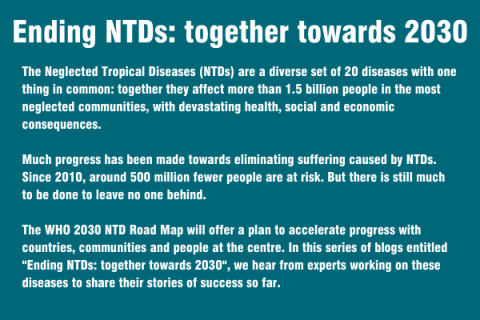
Cross-sectoral collaboration and environmental control of transmission
Neglected tropical diseases (NTDs) are intimately linked to poverty and thrive in unsanitary living conditions.
To sustain the achievements made so far in the fight to control and eliminate NTDs, a major challenge towards 2030 is to reduce NTDs’ transmission potential and boost primary prevention by acting on the environment.
This will require close collaboration with non-health sectors, which is easier said than done. Some lessons can be drawn from field experience.
Rusizi plain
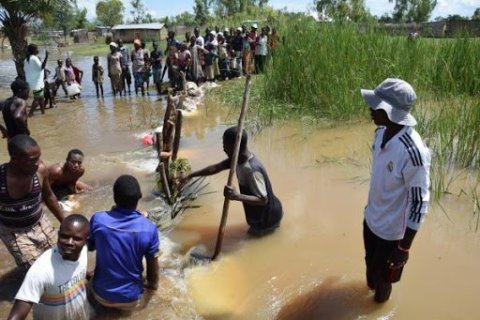
When, in the late 1980s to early 1990s I worked in Burundi to control schistosomiasis and soil-transmitted helminthiases, I had the opportunity with my malaria colleague to carry out environmental control of transmission in the Rusizi plain. This is an irrigated area and the main endemic area for all three diseases.1,2
The project was part of a broader rural development effort funded by the European Development Fund, with additional contributions from Belgium and Germany.
The environmental component was aimed to complement what was at the time pioneering disease-specific interventions that were already being implemented at the community level, such as large-scale preventive treatment, indoor residual spraying and the distribution of (manually) insecticide-treated bed nets.
The project rehabilitated existing draining facilities or installed new ones to control seasonal flooding, installed footbridges where needed, and built public toilets, hand and feet washing stations and laundry facilities in strategic locations. Households were encouraged to construct latrines and improve their houses and premises at their own expense.
To this effect, the project offered some items and services such as concrete latrine slabs, mosquito netting for doors and windows, and on-demand insecticide impregnation of curtains and wall tapestry.
Transferring work to Zimbabwe
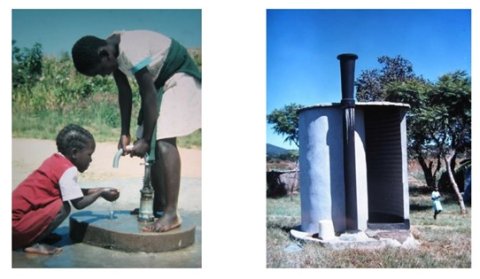
I had previously worked on improving the communal water supply and sanitation in Zimbabwe. Mostly on a self-help basis, with appropriate technology developed by the Blair Research Laboratory.3
Consequently my initial intention was to try and replicate such technology in Burundi. But the first sobering lesson was that what had worked well in Zimbabwe did not work in Burundi. Geology, climatic conditions, collective practices and skills, and locally available materials and their costs were too different.
We had to turn to more conventional ways to construct latrines and to address the existing piped water system that captured water on the rainy mountain crests and distributed it to the lower plain through a network of communal standpipes.
The system was old, had become unreliable and provided hardly enough water for basic household use. There was no point in trying to construct laundry slabs or washing stations to keep people away from rivers and out of irrigation canals. We had to wait for the renewal of the system, that fortunately was planned as part of the broader development scheme even before our project had started.
Laundry slabs
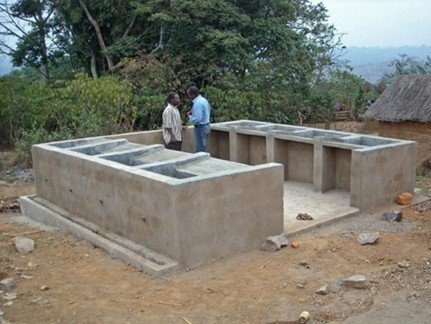
During the first stages of the project we therefore focused on drainage, the construction of footbridges, public toilets near markets and in schools, and the unrelenting repairs of broken-down water supply. In terms of drainage, the project carried out the initial rehabilitation or installation, while the maintenance relied on customary weekly community service work overseen by communal authorities.
Once the entire piped water system was renewed with funding from the German development cooperation, the water supply had become reliable and plentiful with an average of one standpipe for every 60 families, as compared to one per 300 families before.
Our next task was to add dry laundry slabs (without taps) near communal standpipes and washing stations in places where people otherwise would have washed in snail-infested drainage canals after a day’s work in their rice paddies. It took us a while, with the help of beneficiary communities, to conceive robust, low maintenance facilities which consider user comfort. But once we had managed, they became exceedingly popular without much need for behavioural change education.4
Collaboration with non-health sectors
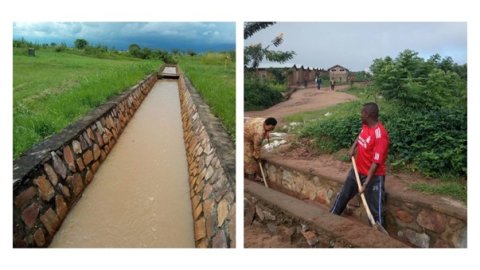
All this required close collaboration with non-health sectors that were part of the local society, such as infrastructure and water management, agriculture, education, land use planning and environment.
The fact that the project was part of a broader rural development scheme had greatly facilitated cross-sectoral coordination. And the local government authorities, as “owners” of the initiative, played their full role.
As the quantitative impact of environmental improvement on parasitic infections had been demonstrated in nearby suburbs of Bujumbura, we preferred to use qualitative methods to evaluate the project.5
Overall contentment in communities was high. Somewhat surprisingly, the benefit mentioned most often was premises not flooding during the rainy season. This made it worthwhile to invest in the improvement of houses and their surroundings, by making use of materials and services offered by the project.
Access to those materials was facilitated through subsidised prices and a credit facility through the agricultural marketing board. This enabled people to buy materials during the year, with cash being recovered when produce was sold to the board.
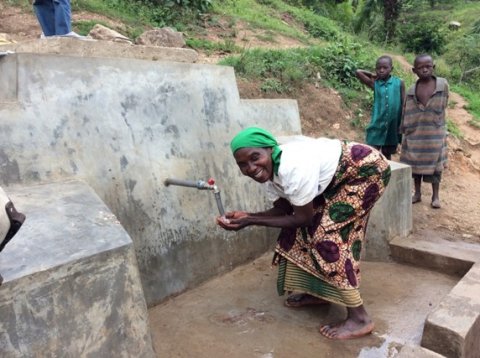
Some lessons can be drawn from this pioneering experience. Firstly, methods and technologies that are developed for one type of environment or country may not do well in other settings.
Secondly, a prerequisite for the primary prevention of disease transmission is improvement of the environment, with an adequate water supply and basic wholesome improvements. Once the basics are there, targeted disease-specific enhancements can be made for a marginal incremental cost.
Thirdly, the environmental control of endemic disease transmission as part of broader development projects greatly facilitates cross-sectoral collaboration. Local governance authorities hold the key to overseeing successful implementation of such cross-sectoral projects and have the mandate to ensure maintenance.
Finally, the fulfilment of beneficiary communities’ expectations increases their willingness to pay for improvements to their houses and premises. This opens opportunities for cost-sharing if subsidised commodities are offered and, in cashless communities, a credit facility is available.
References
- Gryseels B. The epidemiology of schistosomiasis in Burundi and its consequences for control. Trans R Soc Trop Med Hyg. 1991; 85:626-633. doi: 10.1016/0035-9203(91)90371-5. PMID: 1780993
- Barutwanayo M, Coosemans M, Delacollette C, Bisore S, Mpitabakana P, Seruzingo D. La lutte contre les vecteurs du paludisme dans le cadre d'un projet de developpement rural au Burundi [Campaign against malaria vectors in the framework of a rural development project in Burundi]. Ann Soc Belg Med Trop. 1991;71 Suppl 1:113-125. French. PMID: 1793263.
- Morgan P. Rural water supply and sanitation: Blair Research Bulletins. ISBN 0333485696. Macmillan, London, UK, 1990.
- Engels D, Ndoricimpa J, Gryseels B. Schistosomiasis mansoni in Burundi: progress in its control since 1985. Bull World Health Organ. 1993; 71:207-21 PMID: 8490984.
- Engels D, Ndoricimpa J, Nahimana S, Gryseels B. Control of Schistosoma mansoni and intestinal helminths: 8-year follow-up of an urban school programme in Bujumbura, Burundi. Acta Trop. 1994; 58:127-140. doi: 10.1016/0001-706x(94)90052-3. PMID: 7887338.